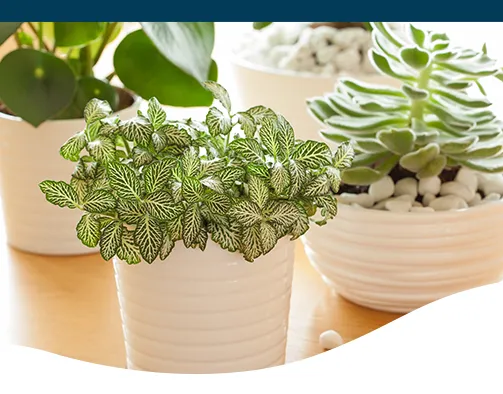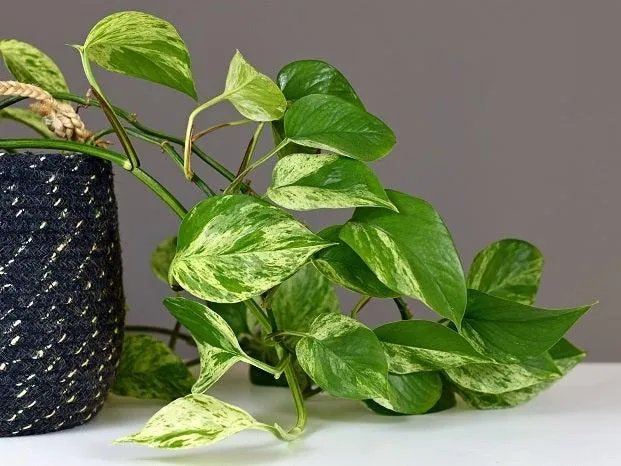Is Hoya Carnosa Safe for Cats?
If you have cats and are considering houseplants, you may wonder whether the popular hoya carnosa is a safe choice. As the owner of two curious feline friends myself, I understand the desire to pet-proof your plant selection. In this article, I’ll take a deep dive into hoya carnosa safety for cats, addressing all aspects of concern from both a botanical and veterinary perspective.
What is Hoya Carnosa?
Hoya carnosa, commonly called the wax plant or porcelain flower, is a climbing vine native to southeast Asia. It’s well known for its waxy, heart-shaped leaves and clusters of fragrant, star-shaped flowers. Hoya carnosa is a popular houseplant due to its appealing appearance and low maintenance needs. However, some of its attributes could potentially pose risks to cats.
Toxicity Concerns
According to the ASPCA Poison Control Center, all parts of the hoya carnosa plant are considered mildly toxic to cats if ingested. The plant contains saponins, which can cause vomiting and diarrhea if eaten. While the toxicity is generally low risk, kitties may find the waxy leaves tempting to nibble on due to their unique texture.
- From my experience as a plant owner, I’ve found cats to be naturally curious explorers who put everything in their mouths. Even non-toxic plants can pose a choking hazard if large fragments are ingested.
- At the same time, most veterinary sources list hoya carnosa as safe in small amounts. So an occasional nibble is unlikely to cause more than an upset tummy. However, aggressively chewing or swallowing large pieces could provoke a stronger reaction.
Irritation Potential
Another risk is possible skin or eye irritation. Saponins present on hoya carnosa leaves and stemsmay cause inflammation if touched then licked by a curious kitty. While saponins are generally not absorbed through intact skin, mucous membranes like the eyes could potentially be impacted.

Allergen Potential
Some cats may also exhibit allergic reactions to hoya carnosa pollen, saponins or other plant compounds. Symptoms could range from mild sneezing or watery eyes to more serious issues like hives or breathing trouble. Therefore, high-allergy kitties may want to avoid this plant altogether just to be on the safe side.
So is it worth the risk?
In summary, while not highly toxic, hoya carnosa does carry some safety concerns for cats due to its physical characteristics and compounds. The degree of risk depends on individual cat behavior and health factors. Here are some things to consider:
- Cats with a habit of aggressively chewing or eating plants may want to be kept away from hoya carnosa altogether.
- Outdoor or indoor-outdoor cats bringing in pollen residue on their fur could unintentionally expose indoor feline housemates.
- High-curiosity or allergic kitties are best suited to non-toxic plant alternatives.
- securely out of reach may minimize ingestion danger from an inquisitive cat.
- Regularly removing fallen leaves and worn regions could reduce the odds of accidental contact.
Ultimately, it’s up to you whether the aesthetic benefits outweigh potential safety issues for your particular cat. I’ve had success keeping hoya carnosa as tabletop or hanging plants in a high cabinet – basically sorted from my cats. But for multi-cat homes or those with especially rambunctious kitties, it may not be worth the risk, even with precautions.
Alternative Plant Options
Fortunately, there are numerous beautiful, low-maintenance, and completely non-toxic houseplants suitable for curious cats. Some top choices include:

- Chinese evergreen (Aglaonema): Lovely leathery leaves in diverse colors. Withstands moderate neglect.
- Snake plant (Sansevieria): Iconic stiff blades that filter toxins and withstand low light. Near impossible to kill.
- Pothos (Epipremnum): Hard to find a home without a heartleaf philodendron. Vines well and thrives in many conditions.
- Peace lily (Spathiphyllum): Moisture-loving beauty with dramatic white blooms. Thrives with average care.
- Spider plant (Chlorophytum): Adorable mini-babies on moms that trail elegantly. Multiplies to fill any space.
All of these make lovely, low-fuss additions that your furry friends can enjoy safely without concerns. Plus you get the joys of green without the worries – a win-win for plant and pet parents alike if hoya carnosa isn’t your best bet.
Final Thoughts
In closing, the decision depends largely on your individual cats and lifestyle. Hoya carnosa can generally be kept with proper precautions. But it may not be worth the risk for some feline families. Non-toxic substitutes provide peace of mind while still adding beauty. Overall, prioritizing pet safety should guide your plant selection. Hopefully this helps you determine the best approach for your home.
Let me know if you have any other questions! Wishing you and your kitties many happy, healthy years of indoor gardening. With a little research, it’s easy to find options the whole family can enjoy.
Hoya Carnosa Safety Information for Cats
| Plant Part | Toxicity Level |
|---|---|
| Leaves | Low |
| Stems | Low |
| Flowers | Low |
| Effects of Ingestion | Mild vomiting or diarrhea |
| Prevention | Keep plant out of reach of cats. Monitor cats when near plant. |
| Treatment | Induce vomiting if large amount ingested. Monitor for 24 hours. |
| Overall Safety | Generally non-toxic but monitor cats around plant as a precaution. |
FAQ
-
Are hoya carnosa plants dangerous for cats?
Hoya carnosa plants are generally not too risky for cats. However, the stems and leaves could cause some tummy troubles if a cat eats a lot of them. So it’s best to keep hoya plants out of reach of curious kitties just to be safe.

-
Will a hoya plant make my cat sick?
While hoya plants aren’t very toxic to cats, there is a small chance a cat could feel a little woozy if it chomps down on a good chunk of stems or leaves. The plant contains some irritants that might bother kitty’s tummy. So you’d wanna kinda keep Fido away from munching on your hoyas, if you can. Still, it’s likely no biggie if kitty nibbles a leaf occasionally.
-
Can cats be around hoya plants?
Mostly yes – cats can hang out near hoya plants. The plant is not very poisonous to felines. However, if little Whiskers decides to take a huge bite out of a hoya, it possibly could cause some indigestion. Therefore, put hoyas where curious kitties can’t easily chomp them, just as a precaution. But there’s no need to ban cats from the same room as a hoya.
-
Are hoya carnosa toxic to cats if ingested?
While hoya carnosa isn’t generally thought to be terribly unsafe for cats, there may be some risks if a cat munches on a lot of the plant material. Some vets report cats experiencing mild stomach upset from eating hoyas. So it’s best to position your hoya where kitty can look but not lick. Still, most cats show no issues even if taking a bite or two. Just watch out for signs of tummy trouble if she gobbles a whole stem!
-
What are the symptoms if a cat eats hoya?
If for some reason Fluffy gorges on a hoya plant, signs may include vomiting, diarrhea, or loss of appetite. However, it seems cats would have to eat a decent amount to cause issues. Minor nibbling is unlikely to result in problems. Keep an eye out for tummy troubles, but chances are good kitty will be A-OK even if sampling a leaf or two. Best to play it safe by keeping hoyas out of paws’ reach regardless.

-
Can my cat and hoya plant coexist in the same space?
Generally, yes – it is possible to have a hoya carnosa near a cat without huge risk. The plant contains small amounts of irritant compounds, but it would take a concerted eating session for a cat to ingest enough to potentially cause digestive upset. So long as kitty can’t easily chow down on large portions of the plant, it’s not a big deal to share space with a peacefully displayed hoya. Just monitor for signs of indulgent plant nibbling!
In conclusion, hoya carnosa plants are not exceptionally risky for felines as long as cats aren’t constantly munching large pieces. Minor nibbling is unlikely to do harm. However, to totally eliminate any small chance of tummy troubles, it’s safest to place hoyas where curious paws can’t pull leaves off for a feast. With care and common sense, cats and hoyas can coexist peaceably in the home.
